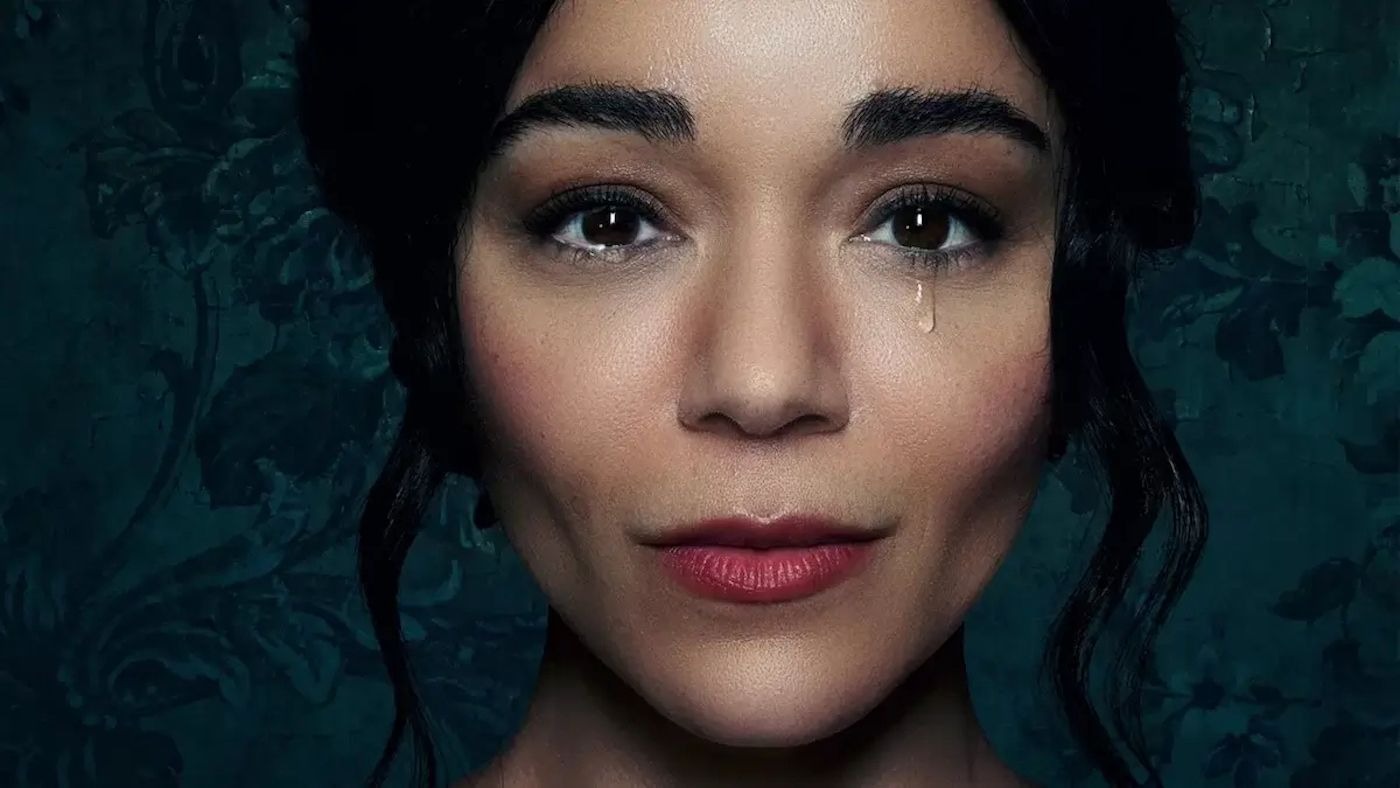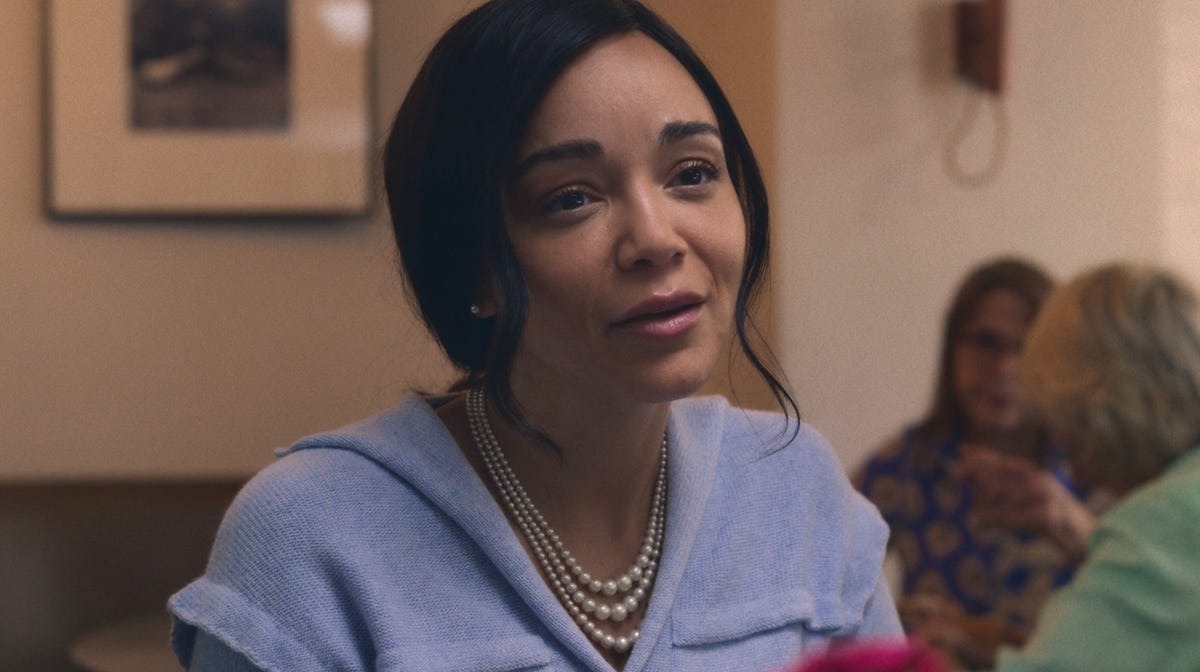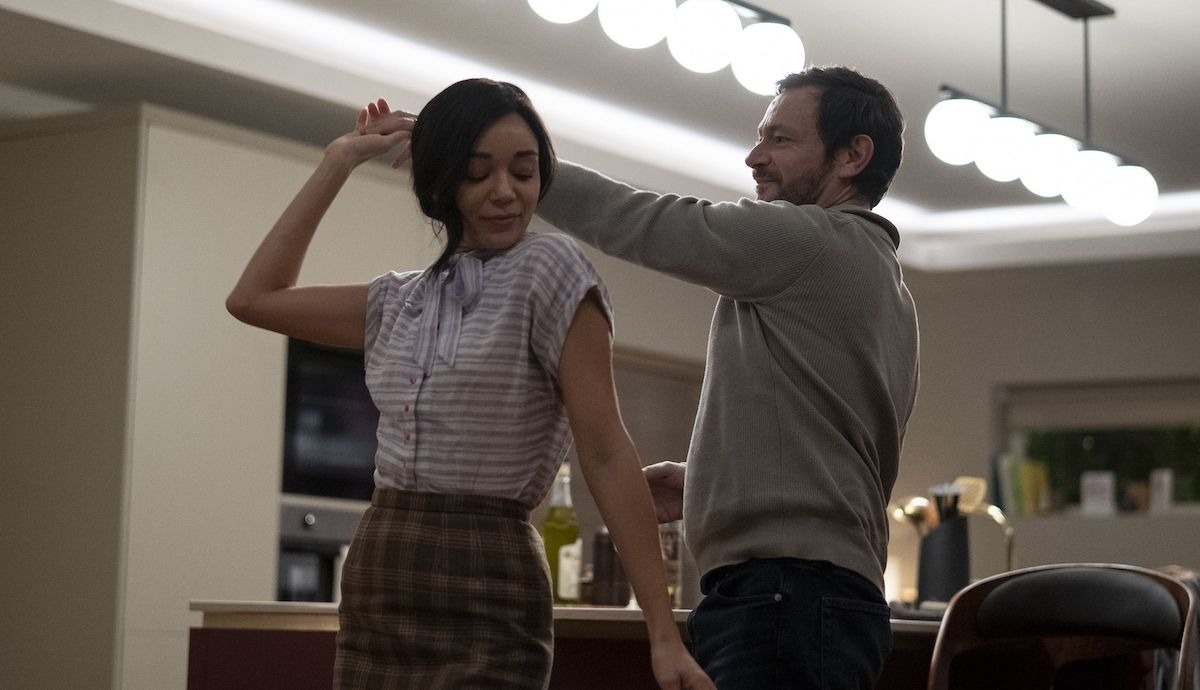The film begins with a portrayal of Cheryl, characterized by Ashley Madekwe, who appears to be fleeing from an abusive situation and grappling with the challenges of poverty.
Her struggles represent a widespread issue within the UK. After a brief scene in which she leaves a note stating her intent to “step out,” the story fast-forwards several years, revealing that Cheryl has transformed into Neve.

She has built a more stable life for herself and now holds the esteemed position of deputy head at a private school. Neve is married to Ian, a white man (played by Justin Salinger), and they are parents to two children, Mary and Sebastian (Maria Almeida and Samuel Small).
Although Mary and Sebastian seem to embody a white identity, it is soon disclosed that Cheryl abandoned two Black children from her past, who have tracked her down.
The narrative reveals in several chapters, culminating in a gripping “Family Reunion” segment where she offers her firstborn children, Carl and Dione (Joden Myrie and Bukky Bakray), £20,000 in exchange for their silence.
Tension Builds in The Strays
As Carl and Dione confront Neve and Ian in their home, the tension escalates into a terrifying ordeal reminiscent of Michael Haneke’s Funny Games. The siblings engage in a disturbing game with their captives, akin to the unhinged aggressors from Haneke’s film.
They force Neve and Ian to sing “Happy Birthday,” showcasing their psychological scars, illustrated by Carl’s mention of being “sectioned” by the government due to mental health challenges and Dione’s reference to a group she labels “the Meanies.”
Despite addressing Cheryl as “mummy,” Carl and Dione realize that reintegrating into her life is not feasible. Neve’s previous remarks about Ian’s unwillingness to raise two Black children expose the constraints of their acceptance, highlighting deeper societal biases.
Ian’s contempt for Cheryl’s attempt to buy off her children underscores a contrast between his disdain for her actions and Cheryl’s internalized racism. This dynamic offers a thought-provoking critique of middle-class British society, where the siblings’ presence disrupts the privileged environment. Dione’s eye-catching outfit at a charity event further emphasizes her stark differences among the largely white attendees.
Ian’s declaration about hiring a Black girl at work indicates a superficial approach to diversity, while the school caretaker’s comment to Carl about the only color that matters being his football shirt reinforces racial insensitivity.
Cheryl’s unwillingness to discuss her Black heritage reflects an underlying shame, not solely rooted in abandoning her children but also influenced by societal expectations. This theme extends to the children of Cheryl and Ian, particularly highlighted in a moment when Neve critiques Mary’s hairstyle, which connects to her heritage.
Cheryl’s Conflict Within
Portrayed as the film’s antagonist, Cheryl is driven by her own internal struggles. Even when a delivery driver arrives, seemingly presenting a chance for assistance, she comes to the painful realization that her envisioned life remains out of reach unless she acknowledges her authentic self. This cyclical pattern leads her to once again abandon her children, disappearing from their lives once more.
Exploring the Film’s Conclusion
While categorized as horror, the film refrains from presenting a twist akin to Us. Instead of a scenario where Carl and Dione usurp Mary and Sebastian, it portrays Cheryl/Neve as having forsaken all four of her children, leaving each of them adrift.

As the children gaze blankly at the audience, the poignant tune of Lord Kitchener’s “If You’re Not White, You’re Black” plays in the background. Tragically, Cheryl’s children, who can pass for white, will never be considered “white” enough for her or the society they inhabit, reinforcing her earlier claim regarding the unequal opportunities linked to her skin color.
Commentary on Society
The Strays delves into the remnants of a post-imperial United Kingdom, exploring the persistent class struggles intertwined with one’s background. While Martello-White highlights the experiences of the Black community, the narrative resonates with any minority that fails to meet the expectations of the white British populace.
Despite progress made since the race riots of the 1980s, tales like Cheryl’s continue to be relegated to the margins, compelling her to conform to a white suburban lifestyle.
Cheryl’s Unresolved Dilemma
The notion that Cheryl may never achieve inner peace suggests that she, too, embodies the concept of being a stray. The film begins by illustrating her efforts to adopt a middle-class accent and the lengths she goes to disguise her natural hair with a weave.
As the narrative reveals, Neve’s true identity resurfaces, with her uncomfortable weave and captivity symbolizing her authentic self. The character of Neve finally represents a façade, concealing Cheryl’s reality.
Final Scene Reflection
The concluding scene mirrors Cheryl’s initial interaction with her reflection, as she struggles to face her true identity before disappearing into the night. Madekwe stressed the importance of this moment during an interview with Digital Spy, clarifying that the mirror scene was not part of the original script but evolved into a pivotal element during filming.
Sequel Prospects
In terms of a potential sequel, Myrie indicated that while discussions occurred on set, The Strays is intended to stand alone. If this were a Ryan Murphy Netflix series similar to The Watcher, one could envision a continuation where Cheryl adopts a new persona, pursued by an ever-expanding group of strays. As it stands, however, it appears that The Strays 2 is unlikely to come to fruition.



